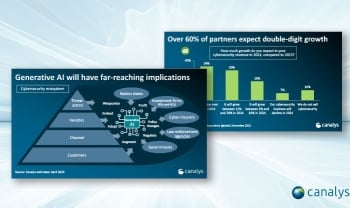Modern SOCs and MDR Services Series: 6 Benefits and Why They Matter

The growing number and complexity of threats, combined with the expansion of the attack surface, complicate the primary purpose of a SOC: detecting, analyzing, and responding to security incidents. These factors generate exponential growth in data volume and security alerts, which teams need more resources to address.
31% of SOC leaders and experts state that information overload is a significant pain point, and 34% cite increased workload as the leading cause of burnout. Moreover, 31% point to an inability to prioritize threats due to the high volume of alerts, which are mostly false and triggered by a lack of context. In addition, 34% of professionals experience difficulties operating across too many tools, which impacts security efficiency, according to data published by CSO.
SOC teams need to modernize to tackle these issues by using automation to reduce the number of alerts. This optimizes resources and frees up team time to develop processes that enable a proactive approach to detection and response. A proactive approach can detect and respond to threats that infiltrate the network unseen by existing security controls, taking action before damage occurs or becomes more serious.
Benefits of modernizing SOCs
In general terms, it enables the team to perform their work efficiently and supports them in accomplishing their tasks. But, to understand what a modern SOC means for an organization, we need to know the six key benefits it delivers to companies:
-
It reduces incident detection time: The average time it takes companies to detect a malicious threat on their systems is 212 days. However, with 24x7 monitoring, it is possible to reduce this timeframe by identifying and investigating abnormal activity. To perform early detection, the team must gain contextualized visibility into what is happening, correlating it with up-to-date, in-depth knowledge of the techniques used by threats to understand and respond quickly. Automating detection, prioritization and investigation helps prevent the team from becoming overwhelmed by the number of alerts and enables them to analyze the anomalous activities that require their attention. Continuous monitoring is essential to detect early suspicious signals and improve incident detection and response time.
-
It reduces response time and costs associated with security incidents: IBM data reveals that the containment time for a security incident is about 75 days and costs about $4.35 million. Through constant monitoring and detection during the early stages of the intrusion, the SOC can mitigate the attack early on, which decreases the economic and reputational impact due to business downtime, cost of return to normalcy, loss of data, or lawsuits. The IBM study also indicates that attacked companies with an incident response team could save 58% (an average of $2.66 million) of the costs associated with a major attack.
-
It reduces the risk of cyberattacks and improves cyber resilience: Once the incident is under control, analyzing the assets impacted, the vulnerabilities used, and the security controls circumvented will provide critical information to take actions to improve the systems through shrinking the attack surface and improving measures and processes associated with the organization's security programs. This enables an organization to anticipate new threats more effectively and be more resilient to future cyberattacks.
-
It provides a holistic approach to enterprise security: A Security Brief article states that 62% of global IT and business leaders report blind spots that hinder security and estimate that they have only 62% visibility into their attack surface. In this regard, the processes and practices of a modern SOC help detect threats earlier and even prevent further attacks from occurring by providing greater visibility into the root cause, course of actions, and systems impacted during the incident in a holistic manner. This enables organizations to stay ahead of future risks and adversaries.
-
It improves communication within the team and with other departments in the company: The lack of collaboration between the parties involved in the detection, investigation, and response process is one of the main obstacles to obtaining better results from security programs. Working in silos creates communication gaps that lead to delays in threat detection and slow, disjointed response processes that can seriously affect the organization. Creating a centralized, intuitive, and collaborative hub allows security team members and others involved when an incident occurs to work more efficiently and agilely, as all workflows are interconnected.
-
It enhances the company’s reputation: Having a dedicated modern SOC demonstrates that the company takes the security and privacy of the data it handles very seriously. This generates trust among employees, customers, and partners, who will have no doubts about protecting their data when they have to share it with the organization.
The benefits of modernizing the SOC are many and overall translate into increased defensive and offensive security for the enterprise and its security operations teams (SecOps), as well as substantially reducing risk and security costs for the company. However, transforming a traditional SOC into modern SOC can be complicated. The eBook "Modern SOC and MDR: what they are and why they matter" describes the security operations team modernization process in detail and provides a broad overview of today's SOC needs.
Today more than ever, it is necessary to stay one step ahead and anticipate the threats that put the productivity and reputation of companies at risk. To learn more about how WatchGuard helps mature organizations and partners create and modernize their own SOC, visit WatchGuard's Security Operations Centers area.
Related content:


